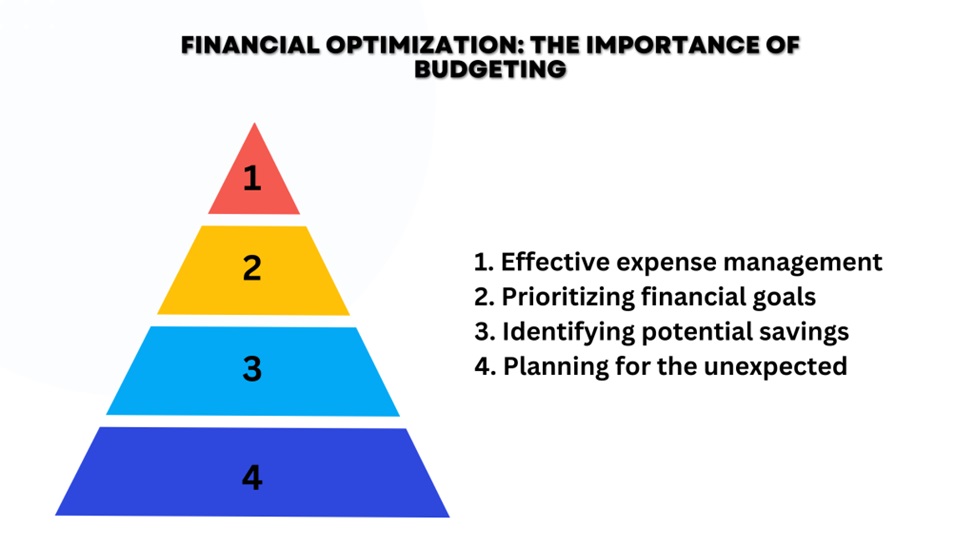Financial Optimization: Elevating Your Business Performance
In today's fiercely competitive business landscape, achieving success necessitates more than merely offering a stellar product or service. It entails strategic decision-making, efficient resource management, and a sharp focus on maximizing profitability.
One pivotal aspect of this multifaceted process is financial optimization – a comprehensive approach to managing finances that can wield a significant impact on a company's performance and long-term sustainability.
Leveraging specialized expertise from a fractional controller and CFO further enhances financial optimization efforts. These professionals offer tailored financial insights and strategic guidance, enabling businesses to navigate intricate financial landscapes with precision and confidence, ultimately propelling them toward greater success and resilience.
I. Understanding Financial Optimization
Financial optimization refers to the strategic management of a company's financial resources to maximize efficiency, profitability, and overall performance. It involves identifying areas of improvement, implementing cost-saving measures, and optimizing revenue generation strategies.
According to the McKinsey Global Institute's executive summary, financially optimized businesses are 3.5 times more likely to exceed industry average profitability.
The Importance of Financial Optimization for Business Success
Financial optimization is not only a desirable goal; it is essential for business success. Businesses that effectively optimize their financial operations see increased profitability, improved cash flow, and enhanced overall performance.
Businesses that effectively optimize their financial operations experience an average 10% increase in profitability. (Source: Deloitte)
To further enhance financial optimization strategies, businesses may consider leveraging services such as fractional cfo services, which provide specialized financial expertise and strategic guidance, helping businesses navigate complex financial challenges effectively.
Core Principles of Financial Optimization: Efficiency, Profitability, and Risk Management
At the heart of financial optimization are three core principles: efficiency, profitability, and risk management. By focusing on these principles, businesses can streamline operations, maximize revenue, and mitigate potential risks.
Efficiently managed companies are 2.5 times more likely to be top performers in their industry. (Source: Aberdeen Group)
II. Key Strategies for Financial Optimization
Effective cost reduction is a cornerstone of financial optimization. By identifying and eliminating non-essential costs, negotiating better terms with suppliers, and implementing efficient expense management strategies, businesses can improve their bottom line.
Revenue Maximization and Profitability Enhancement
Revenue maximization involves optimizing pricing strategies, diversifying revenue streams, and improving sales and marketing effectiveness. These strategies enable businesses to increase profit margins and overall profitability.
Working Capital Management and Cash Flow Optimization
Efficient working capital management and cash flow optimization are essential for maintaining financial health. By optimizing inventory management, and streamlining accounts receivable and payable processes, businesses can improve cash flow and ensure liquidity.

III. Utilizing Technology for Financial Optimization
The adoption of financial management software and tools can significantly enhance financial optimization efforts. These tools streamline financial processes, improve data accuracy, and enable data-driven decision-making.
Automation and Artificial Intelligence in Financial Operations:
Automation and artificial intelligence (AI) are revolutionizing financial operations. From robotic process automation (RPA) for repetitive tasks, businesses can leverage technology to improve efficiency and accuracy. AI-powered forecasting and risk analysis tools enable organizations to make data-driven decisions with greater confidence, thereby enhancing accuracy and mitigating risks. In this context, professionals like fractional controllers play a pivotal role in guiding organizations through the integration of these cutting-edge technologies. Similarly, a virtual CFO is instrumental in ensuring seamless implementation and maximizing the benefits derived from automation and AI.
IV. Best Practices for Sustainable Financial Optimization
Establishing a culture of continuous improvement and cost awareness is paramount for ensuring sustainable financial optimization within organizations. By cultivating an environment that encourages innovation, promotes cost-consciousness, and fosters a culture of accountability, businesses can lay the foundation for long-term success and resilience in today's dynamic market landscape.
Businesses that prioritize continuous improvement initiatives and foster a sense of responsibility toward cost management consistently outperform competitors, achieving an average 10% higher profit growth as per research from McKinsey.
Embracing the expertise of professionals like a virtual CFO or fractional CFO can further enhance this culture, providing specialized financial insights and strategic guidance to drive ongoing improvement and optimization efforts across all facets of the organization. Through collaborative efforts and a steadfast commitment to excellence, businesses can navigate challenges, capitalize on opportunities, and chart a course toward sustained growth and prosperity.
Regular Monitoring and Performance Evaluation
Regular monitoring and performance evaluation are essential for identifying areas of improvement and measuring progress. By establishing key performance indicators (KPIs), conducting financial audits, and reviewing performance regularly, businesses can stay on track toward their financial goals.
Agility and Adaptability in Response to Market Changes and Economic Trends
In today's rapidly changing business environment, agility and adaptability are essential for success. By staying informed about market changes and economic trends, and being prepared to adjust strategies accordingly, businesses can navigate challenges and capitalize on opportunities.
Conclusion
Financial optimization stands as a fundamental cornerstone of business success, serving as a catalyst for greater efficiency, profitability, and long-term sustainability. By embracing the core principles of financial optimization and implementing key strategies such as cost reduction techniques, revenue maximization efforts, and working capital management, companies can navigate through challenges and seize opportunities with agility and confidence.
Leveraging technological advancements and adopting best practices further fortifies their position in the market, enabling them to stay ahead of the curve. Additionally, seeking support from specialized professionals such as a virtual CFO and fractional controller can provide invaluable insights and guidance, empowering businesses to make informed decisions and drive impactful outcomes.
Through a holistic approach to financial optimization, businesses can thrive in today's competitive landscape and achieve sustained growth and success in the ever-evolving business ecosystem.
FAQs
- What is the average profitability of a company?
The average profitability of a company can vary greatly depending on the industry, size, and maturity of the business. Generally, a net profit margin (net income divided by revenue) of 5-10% is considered average for most businesses. However, it's important to consider industry benchmarks, as some sectors may have higher or lower profit margins.
- What is most likely to increase a firm's profit?
Several factors can increase a firm's profit, including revenue growth, cost optimization, operational efficiency, and effective pricing strategies. Introducing new products or services, expanding into new markets, and improving customer satisfaction can drive revenue growth. Streamlining processes, leveraging technology, and negotiating better supplier terms can reduce costs and boost profitability.
- What is a good level of profitability?
There is no one-size-fits-all answer for a good level of profitability, as it depends on the industry, growth stage, and business goals. Generally, a net profit margin above 10% is considered good, but some industries may have lower or higher profit expectations. Ultimately, a good level of profitability should allow for reinvestment in the business, sustainable growth, and a reasonable return for investors or owners.

